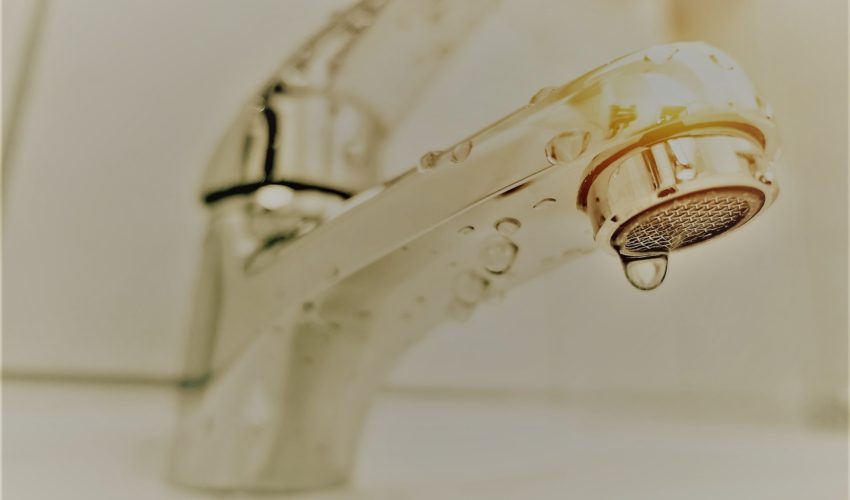Speedy Fixes for Limited Water Pressure in Your Home
Speedy Fixes for Limited Water Pressure in Your Home
Blog Article
What are your opinions on 9 Reasons for Low Water Pressure in Your House?

Low tide pressure in your house can be a frustrating issue, affecting every little thing from showering to cleaning dishes. If you're experiencing weak water flow, there are several feasible reasons and options to discover. In this guide, we'll discuss common reasons for low tide stress and useful steps to resolve the concern successfully.
Intro to Low Water Stress
Low water stress takes place when the flow of water from your faucets, showers, and various other fixtures is weak than normal. This can make daily tasks a lot more challenging and less reliable. Understanding the causes of low tide stress is critical to finding the best service.
Typical Sources Of Low Water Pressure
Pipe Obstructions
Gradually, pipes can become obstructed with mineral deposits, debris, or debris, restricting the circulation of water. This is a common problem in older homes with galvanized steel pipes.
Corrosion
Deterioration within pipes can result in leaks and lowered water pressure. Rust build-up can constrict water flow, particularly in maturing plumbing systems.
Faulty Stress Regulatory Authorities
Stress regulatory authorities are accountable for maintaining consistent water pressure in your house. If they malfunction, it can lead to low water stress or uneven flow throughout your house.
Local Water Issues
Often, the problem exists outside your home. Local water supply concerns, such as main line leaks or maintenance work, can briefly lower water stress in your area.
How to Identify Low Water Stress
Checking Taps and Fixtures
Begin by checking the water pressure at various taps and components throughout your home. If the problem is isolated to specific areas, it may show local issues.
Examining Pipelines
Check visible pipes for signs of leakages, deterioration, or clogs. Focus on any type of unusual noises, such as knocking or rattling pipelines, which could suggest problems within the plumbing system.
Consulting with a Plumber
If you're incapable to determine the root cause of low tide pressure, think about working with a professional plumber to perform a detailed evaluation. They can recognize underlying concerns and recommend suitable remedies.
DIY Solutions to Fix Low Tide Pressure
Cleaning Aerators and Showerheads
Mineral deposits can accumulate in aerators and showerheads, reducing water flow. Get rid of and clean up these parts regularly to boost water stress.
Flushing Hot Water Heater
Sediment buildup in the hot water heater can limit flow and minimize performance. Purging the storage tank periodically assists remove debris and maintain optimal performance.
Inspecting Pressure Regulator
Ensure that the stress regulator is working appropriately. Readjusting or changing the regulatory authority can aid restore correct water pressure throughout your home.
Cleaning Clogs in Pipes
For minor obstructions, try using a plumbing serpent or chemical drain cleaner to clear blockages in pipelines. Be cautious when utilizing chemicals and comply with security guidelines.
When to Call a Professional Plumber
If do it yourself efforts fall short to deal with the issue or if you believe considerable plumbing issues, it's finest to look for aid from an accredited plumber. They have the competence and devices to attend to intricate problems safely and effectively.
Safety Nets to Maintain Water Pressure
Normal Maintenance
Schedule regular maintenance for your plumbing system to prevent concerns such as rust, leaks, and obstructions. Resolving minor issues early can help stay clear of more substantial repairs in the future.
Installing a Pressure Booster
Take into consideration installing a stress booster pump to improve water pressure in areas with regularly reduced flow. This can be specifically useful for multi-story homes or residential or commercial properties with high-demand fixtures.
Surveillance Water Use
Be mindful of water use behaviors and stay clear of overtaxing the plumbing system. Simple changes, such as staggering showers and washing loads, can assist maintain adequate water stress.
Conclusion
Taking care of low water stress can be irritating, however recognizing the underlying reasons and implementing proper services can recover optimal flow throughout your home. Whether it's cleaning up aerators, checking pipes, or seeking advice from a plumber, taking proactive steps can guarantee a constant supply of water for your everyday requirements.
FOUR WAYS TO FIX LOW WATER PRESSURE NOW
Turning on a shower or faucet only to find the water comes out in a sad, slow drizzle is never a good feeling. How exactly are you supposed to wash a pan or take a quick shower when it takes 10 minutes just to rinse off a little soap? The good news is that when your water pressure is bad, there's always a cause: typically one that can be easily fixed. Here are some of the most common causes of low pressure and what you can do to fix the issue:
DEBRIS AND MINERAL DEPOSIT BUILDUPS
If you notice low water pressure from just one or two of the fixtures in your house, the problem likely has to do with debris buildup. Water is full of minerals and other debris, all of which can accumulate in your pipes and on your fixtures. This can cause a blockage that affects how much water flows through. To fix this, try filling a small plastic bag with white vinegar, and use a rubber band to hang it around your showerhead or faucet. Let the head of the fixture soak for a few hours, and the vinegar should loosen the deposits.
WATER LEAKS
Leaks are another common cause of low water pressure. If water is flowing out of your plumbing through a hole or crack before it can reach your fixture, the pressure coming out of the faucet or showerhead will be lower. A plumbing professional is your best bet for finding and repairing a leak in your water supply pipes.
Leaks are another common cause of low water pressure. If water is flowing out of your plumbing through a hole or crack before it can reach your fixture, the pressure coming out of the faucet or showerhead will be lower. A plumbing professional is your best bet for finding and repairing a leak in your water supply pipes.
FOUR WAYS TO FIX LOW WATER PRESSURE NOW
Turning on a shower or faucet only to find the water comes out in a sad, slow drizzle is never a good feeling. How exactly are you supposed to wash a pan or take a quick shower when it takes 10 minutes just to rinse off a little soap? The good news is that when your water pressure is bad, there's always a cause: typically one that can be easily fixed. Here are some of the most common causes of low pressure and what you can do to fix the issue:
DEBRIS AND MINERAL DEPOSIT BUILDUPS
If you notice low water pressure from just one or two of the fixtures in your house, the problem likely has to do with debris buildup. Water is full of minerals and other debris, all of which can accumulate in your pipes and on your fixtures. This can cause a blockage that affects how much water flows through. To fix this, try filling a small plastic bag with white vinegar, and use a rubber band to hang it around your showerhead or faucet. Let the head of the fixture soak for a few hours, and the vinegar should loosen the deposits.
WATER LEAKS
Leaks are another common cause of low water pressure. If water is flowing out of your plumbing through a hole or crack before it can reach your fixture, the pressure coming out of the faucet or showerhead will be lower. A plumbing professional is your best bet for finding and repairing a leak in your water supply pipes.
Leaks are another common cause of low water pressure. If water is flowing out of your plumbing through a hole or crack before it can reach your fixture, the pressure coming out of the faucet or showerhead will be lower. A plumbing professional is your best bet for finding and repairing a leak in your water supply pipes.
A VALVE ISSUE
If you have low water pressure throughout your home, check your main shut-off valve to make sure it's completely open. You may also want to see if there's a pressure-reducing valve installed. If there is, have a plumber help you adjust the settings to get the pressure you're looking for.
OTHERS USING WATER
Believe it or not, your low water pressure could be caused by your neighbors. If you notice low pressure at certain times of day, it may be because you and the people living next to you have similar schedules - when everyone is showering at the same time, the pressure will be lower in every home. Low pressure throughout the neighborhood may also be caused by an issue with your municipal water supply. If that's the case, call the supplier to see if they're working on the issue.
https://www.rotorooter.com/blog/water-leaking/low-water-pressure-fixes/

Do you appreciate reading up on Dealing with Low Water Pressure in Your Home? Put a comment further down. We will be delighted to find out your views about this article. We hope to see you back again later on. Sharing is nice. Helping people is fun. Thank-you for taking the time to read it.
Explore Report this page